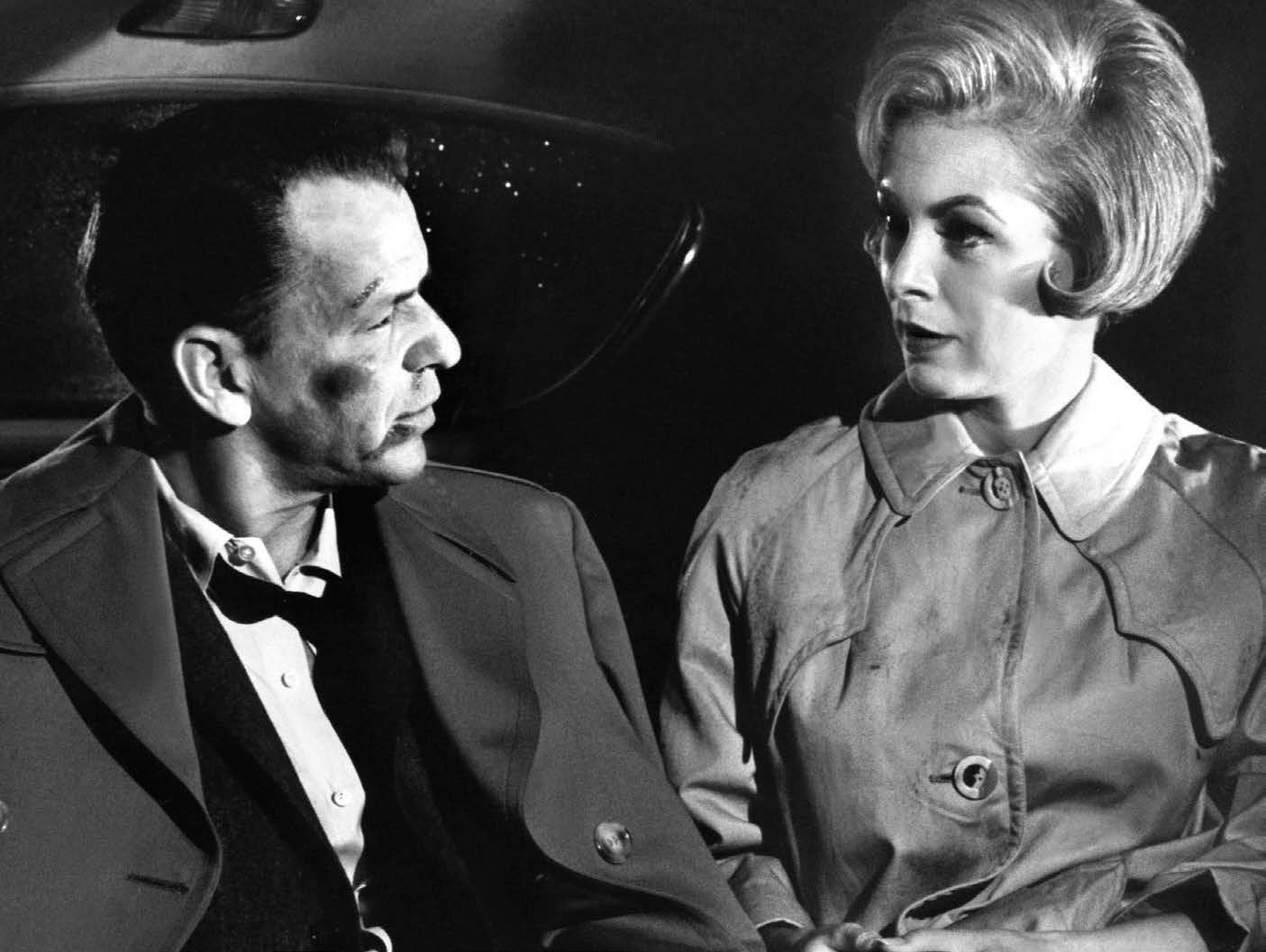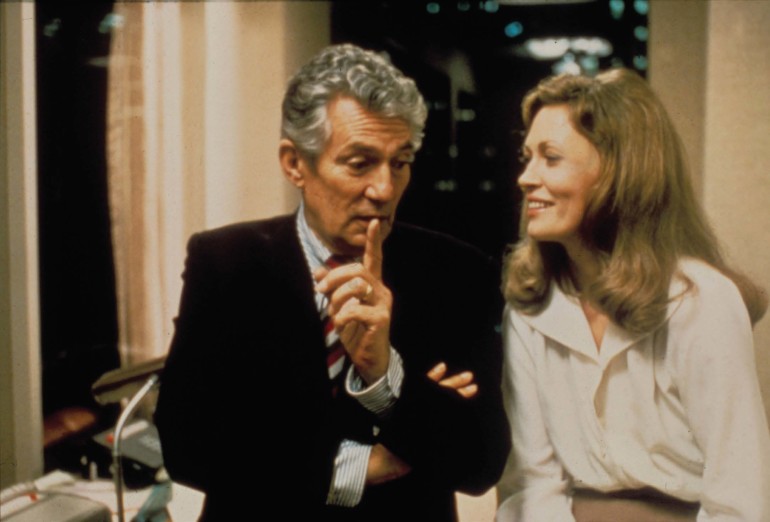Filmmaker Adam McKay offered an interesting discussion topic on Twitter recently.
“Which movie was most ahead of its time and prophetic?” tweeted McKay (@GhostPanther) to just over a million followers. McKay, who won an Academy Award for his screenplay adaptation of Michael Lewis’ book The Big Short, should know a thing or two about being ahead of the curve: the movie, which he also directed, is a dark comedy about a handful of prescient investors who were able to cash in on the collapse of the U.S. mortgage market during the end of the George W. Bush administration.
While that film, as well as McKay’s upcoming Dick Cheney biographical drama Vice (which he also wrote and directed), provide context for recent events that few understood as they were happening, on Twitter he was asking about an even more specialized category: movies that accurately envisioned future events, cultural shifts and political movements before they occurred in real life.
McKay’s own pick was Network, the brilliant satire about a low-rated TV news program that juices its ratings by staging coverage to fit a sensational agenda. Writer Paddy Chayefsky won an Oscar for his original screenplay and Faye Dunaway and Peter Finch (posthumously) received Best Actress and Best Actor awards for their respective roles as an amoral news producer and a mentally disturbed anchor ranting about corruption, consumerism and cultural malaise.
When the film hit theaters in 1976, there was no Fox News, no Glenn Beck, no Alex Jones. I remember seeing the film in a communications class in college in the early 1990s, the same day Geraldo Rivera had his nose broken by a white supremacist during a daytime talk show — a very Network moment. Years later, I ran into Faye Dunaway at a Bay Area film festival and I asked her about the film.
“When you were making that movie, did it feel like what it predicted could actually happen someday?”
“Not in a million years,” Dunaway replied. “It was just such wonderful writing, but it was so outrageous that it might as well have been happening on Mars. But it all came true.”
Idiocracy, McKay’s runner-up for most predictive movie, is even more disturbing. As he points out, Mike Judge’s comedy imagines a future world in which the most average man from 2005 is by far the most intelligent person in 2505. The film, released in a handful of theaters in 2006, earns wince-inducing laughs for its satiric jabs at an American society that elects a professional wrestler as president, lets garbage pile to skyscraper heights, waters its crops with sports drinks, scarfs fried food from fully automated fast food franchises, and enjoys latte bars that double as brothels. Just 10 years after the film’s release, a fast-food corporation announced that it was exploring fully automated stores, a brothel/cafe opened in Switzerland, and a former reality TV star with ties to professional wrestling is the leader of the free world.
“I guess there are things I didn’t exaggerate nearly enough,” Judge told Fast Company in 2016.
Satire and Sci-Fi
Idiocracy makes its points by combining political satire with science fiction, two genres that lend themselves to foretelling. The top-shelf example of this one-two punch is Stanley Kubrick’s Dr. Strangelove or: How I Learned to Stop Worrying and Love the Bomb, one of cinema’s darkest-ever comedies, which tapped into Cold War fears by showing a geopolitical landscape governed by bureaucratic incompetents and conspiracy theory paranoiacs. The film is just as funny and chilling today as it was in 1964 — let’s just hope that final punch line never comes true. Peter Sellers, who appears in another film on this list, plays multiple roles as the U.S. president, a British attaché on a military base, and the titular Strangelove, a military adviser with a very dark past.
Another satirical sci-fi film is John Carpenter’s 1988 cult classic They Live, in which Roddy Piper plays a drifter who uncovers an alien conspiracy to make humans docile and subservient via subliminal brainwashing. Carpenter, a former North Bay resident, uses the sci-fi alien invasion plot to take wicked jabs at American consumerism. They Live’s themes and images inspired the work of street artist Shepard Fairey, who rented the movie for $1 when he was struggling to make ends meet, long before he designed the famed stylized “Hope” poster for Barack Obama.
“The film, though it is somewhat silly, has a rather profound concept, which is that people don’t realize that they are being manipulated because they are so caught up in consumption and the rat race — the drag of day-to-day life,” Fairey says in a YouTube interview. “They don’t realize that they are being controlled by aliens, who are the authoritarians.”
Of course, science fiction films have been artistically and thematically forward-looking since the earliest days of cinema. In the 1927 silent Metropolis, director Fritz Lang dazzled audiences with images of a futuristic city while commenting on the enormous gulf between the wealthy few and the hardworking masses. During the 1950s, Invaders From Mars and Invasion of the Body Snatchers invoked the totalitarian possibilities of communism by portraying a diabolical takeover of parents and friends by alien oppressors. Movies like Them! and The Naked Mantis played on fear of nuclear bombs by enlarging ants and bugs into skyscraper-size terrorists. But the King Kong of nuclear nightmare movies was Godzilla, created by Japanese director Ishiro Honda in 1954.
In the 1960s and ’70s, many sci-fi thrillers were environmental cautionary tales, with Charlton Heston as tour guide to the apocalypse. Planet of the Apes and The Omega Man featured Heston resisting apes and mutants, respectively, on a futuristic Earth, while Soylent Green addressed overpopulation and food supply.
Another classic from that period was 1972’s Silent Running, in which Bruce Dern, groundskeeper of an outerspace biodome, is charged with taking care of plant specimens saved from an uninhabitable Earth. Ridley Scott’s Blade Runner (1982) and Denis Villeneuve’s Blade Runner 2049 (2017) envisioned a near-future Los Angeles as an ecologically devastated dystopia inhabited by rich, poor and synthetic humans.
No science fiction film was more influential than Kubrick’s masterpiece 2001: A Space Odyssey. The 1968 film predicted space stations, commercial space travel, flat-screen televisions, FaceTime and the complications posed by artificial intelligence. Celebrating a 70 mm re-release in theaters for its 50th anniversary this year, 2001 is worth seeing for myriad reasons, including groundbreaking special effects, spectacular marriage of music and imagery, and its uncanny depictions of human life in the near future and beyond.
Political Warnings
Plenty of earthbound films have been prescient as well, particularly about our political media landscape. For example, in Elia Kazan’s 1957 drama A Face in the Crowd, Andy Griffith plays Lonesome Rhodes, a rabble-rouser who gets people’s attention over the radio and, though corrupt to the core, quickly becomes a national superstar. Griffith here is nothing like the nice-guy hero of his eponymous sitcom; he’s pure evil, power hungry and extremely compelling. It’s not a stretch to say the film could be convincingly remade in the era of so-called “fake news.”

The Manchurian Candidate
Two subsequent political thrillers, The Manchurian Candidate (1962) and The Parallax View (1974), also foretold today’s events: the former, based on one of President John F. Kennedy’s favorite novels (legend has it JFK was influential in getting United Artists to greenlight the film), is, eerily, about a political assassination. But even more indelibly relevant is its titular candidate — the brainwashed tool of a foreign power who is carefully placed into government to do damage from within. In The Parallax View, Warren Beatty, a news reporter investigating the assassination of a U.S. senator, uncovers a conspiracy involving a powerful multinational corporation pulling the strings of world affairs. It’s a murky, haunting film that’s just as pertinent now as it was in the Nixon era. Director Alan J. Pakula’s next film was All the President’s Men, one of the all-time great journalism films, although, like The Big Short, it concisely interprets recent events rather than forecasting later ones.
Political comedies in past decades have been remarkably prophetic too, including Wag the Dog, Barry Levinson’s 1997 comedy with Robert DeNiro as adviser to an unnamed president embroiled in a sex scandal. DeNiro’s character consults a Hollywood producer, played by Dustin Hoffman, who uses movie magic to create an elaborate smoke-and-mirrors distraction. Another gem is Being There, director Hal Ashby’s beloved film about Chance, a simple-minded gardener who becomes a presidential adviser due to a series of misunderstandings. The main character, “Chauncey Gardiner” — who is like an alternate-universe version of Lonesome Rhodes — was Peter Sellers’ final great role.


